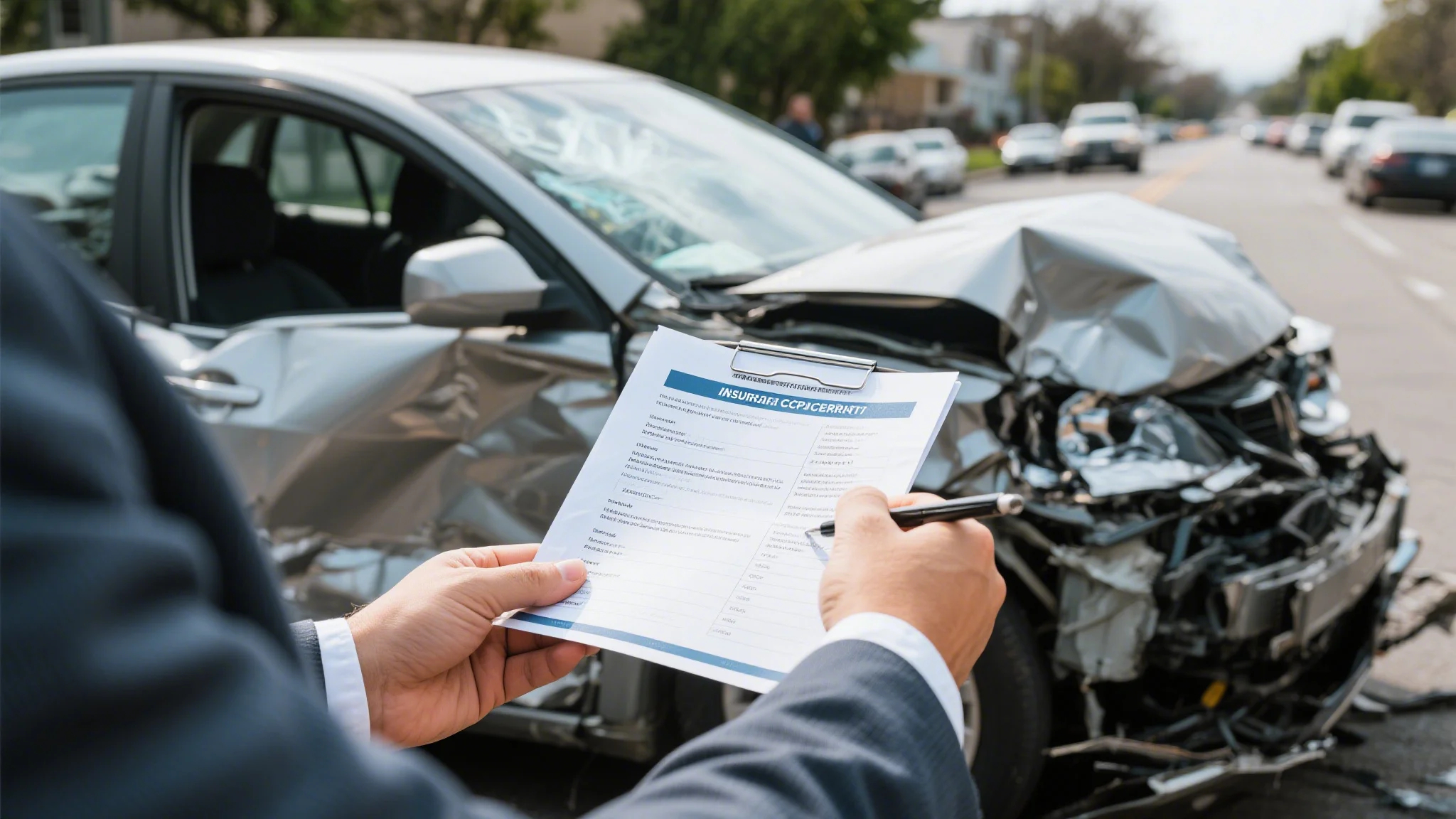Filing a car accident insurance claim can be a daunting process, but with the right approach, you can navigate it smoothly. This guide provides a clear, step-by-step breakdown to help you understand the process, ensuring you receive the compensation you deserve. Whether you’re new to filing claims or just need a refresher, this article will walk you through every stage, from the immediate aftermath of the accident to resolving your claim.

1. Understanding the Importance of Filing a Car Accident Insurance Claim
When you’re involved in a car accident, your first priority is ensuring your safety and the safety of others involved. However, once the immediate danger has passed, it’s crucial to take the right steps to protect your legal and financial rights. Filing a car accident insurance claim is a process that can help you recover damages for repairs, medical expenses, and other losses resulting from the accident.
But not all accidents are created equal, and not all claims are straightforward. Whether you’re at fault or the other driver is, knowing how to file a claim properly is essential. This guide will walk you through the process, from the moment the accident happens to the resolution of your claim.
2. Immediate Actions After a Car Accident
The steps you take immediately after an accident can have a significant impact on the outcome of your claim. Here’s what you should do:
Ensure Safety: Before anything else, check if everyone involved is safe. If anyone is injured, call 911 or seek medical attention immediately.
Exchange Information: If the accident is minor and no one is seriously injured, exchange contact and insurance information with the other driver. This includes names, phone numbers, insurance companies, and policy numbers.
Report the Accident: Depending on the severity of the accident, you may need to file a police report. Even if the accident seems minor, it’s a good idea to report it to your local authorities.
Gather Evidence: Take photos of the accident scene, including damage to both vehicles, traffic signals, and any other relevant details. This evidence can be crucial when filing your claim.
3. Notifying Your Insurance Company
Once the immediate aftermath is handled, it’s time to notify your insurance company. Here’s how to do it:
Contact Your Agent: Reach out to your insurance agent or file a claim online. Most companies have a dedicated claims line you can call.
Provide Details: Be prepared to provide details about the accident, including the time, location, and circumstances surrounding the incident.
File a Claim: Your insurance company will guide you through the process of filing a formal claim. They may assign an adjuster to investigate the claim and determine the payout.
4. Understanding Your Insurance Policy
Before you proceed, it’s important to understand your insurance policy. What coverage do you have? Common types of coverage include:
Collision Coverage: Covers damage to your own vehicle, regardless of fault.
Liability Coverage: Covers damage to the other driver’s vehicle and their medical expenses if you’re at fault.
Medical Payments Coverage: Covers medical expenses for you and your passengers, regardless of fault.
Uninsured/Underinsured Motorist Coverage: Protects you if the other driver doesn’t have sufficient insurance.
Knowing what coverage you have will help you determine what to expect from your claim.
5. Waiting for the Insurance Adjuster
After filing your claim, an insurance adjuster will be assigned to your case. The adjuster’s job is to investigate the accident, assess the damage, and determine the payout.
Cooperate with the Adjuster: Be prompt in providing any requested documents or information. This includes photos, police reports, and medical records.
Be Honest: It’s crucial to provide accurate information. Any discrepancies can delay your claim or even lead to denial.
Ask Questions: If you’re unsure about any part of the process, don’t hesitate to ask the adjuster for clarification.
6. Documenting Your Damages
One of the most important aspects of filing a claim is documenting your damages. This includes both property damage (to your vehicle) and personal injuries (if applicable).
Vehicle Damage: Take detailed photos of the damage to your car. If possible, get a detailed estimate from a trusted mechanic.
Medical Expenses: If you or your passengers were injured, keep track of all medical bills and records.
Other Costs: Include any additional expenses, such as rental car costs or lost wages, that resulted from the accident.
7. Submitting Your Claim
Once you’ve gathered all the necessary documentation, it’s time to submit your claim.
Review Your Claim: Double-check all the information to ensure accuracy.
Submit Electronically or In-Person: Many insurance companies allow you to submit claims online, but you can also submit them in person or via mail.
Follow Up: After submitting your claim, follow up with the adjuster to ensure everything has been received and processed.
8. Waiting for a Decision
After submitting your claim, the insurance company will review it and decide on the payout. This can take anywhere from a few days to several weeks, depending on the complexity of the case.
Be Patient: While it can be frustrating, try to be patient during this process.
Stay Informed: Keep an eye on your email or phone for updates from the insurance company.
Prepare for Negotiation: If the offer doesn’t meet your expectations, you may need to negotiate with the insurance company.
1. Understanding the Role of the Insurance Adjuster
The insurance adjuster is the key figure in your claim process. Their job is to evaluate the claim, assess the damage, and determine the appropriate payout. Adjusters have a lot of discretion in how they handle claims, so it’s important to build a positive relationship with them.
Be Responsive: Answer their calls and respond to their emails promptly.
Be Honest: Again, honesty is crucial. Any exaggeration or misinformation can harm your claim.
Be Organized: Having all your documents in order will make it easier for the adjuster to process your claim.
2. Working with the Adjuster
Once the adjuster has reviewed your claim, they may have questions or request additional information. Here’s how to work with them effectively:
Provide Clear Information: Answer their questions clearly and concisely.
Be Reasonable: While you want to get a fair payout, it’s important to be reasonable in your demands.
Stay Calm: If the adjuster questions your claim, stay calm and professional.
3. Receiving Your Payout
Once the adjuster has reviewed your claim and determined the payout, you’ll receive a settlement offer.
Review the Offer: Carefully review the offer to ensure it covers all your damages.
Accept or Negotiate: If the offer is acceptable, you can sign and return the paperwork. If not, you may need to negotiate further.
Sign and Submit: Once you’re satisfied with the offer, sign the paperwork and submit it to the insurance company.
4. Finalizing the Claim
After accepting the settlement, the insurance company will process the payout.
Receive the Payment: The payment will typically be sent via check or direct deposit.
Close the Claim: Once you’ve received the payment, the claim is considered closed.
Keep Records: Keep all documentation related to your claim for future reference.
5. Tips for a Successful Claim
To ensure a smooth and successful claim, follow these tips:
Act Quickly: Don’t delay in filing your claim or providing information.
Stay Organized: Keep all documents and records in a safe place.
Communicate Clearly: Be clear and concise in all communications with the insurance company.
Be Honest: Always provide accurate information.
Seek Professional Help: If you’re unsure about any part of the process, consider consulting a lawyer or insurance professional.
6. Common Mistakes to Avoid
While filing a claim, it’s important to avoid certain mistakes that could harm your case:
Don’t Sign Without Reading: Always read the settlement offer carefully before signing.
Don’t Exaggerate Damages: Be honest about the damage to your vehicle and any injuries.
Don’t Delay Medical Care: If you’re injured, seek medical attention immediately. Delaying treatment can affect your claim.
Don’t Accept a Settlement Too Quickly: Take your time to review the settlement offer and ensure it’s fair.
7.
Filing a car accident insurance claim can be a complex and stressful process, but with the right approach, you can navigate it successfully. By following the steps outlined in this guide, you can ensure that you receive the compensation you deserve. Remember to stay organized, communicate clearly, and be honest throughout the process.
If you’ve recently been involved in a car accident, take the time to understand your rights and options. By taking the right steps, you can protect yourself and your finances in the event of an accident.




